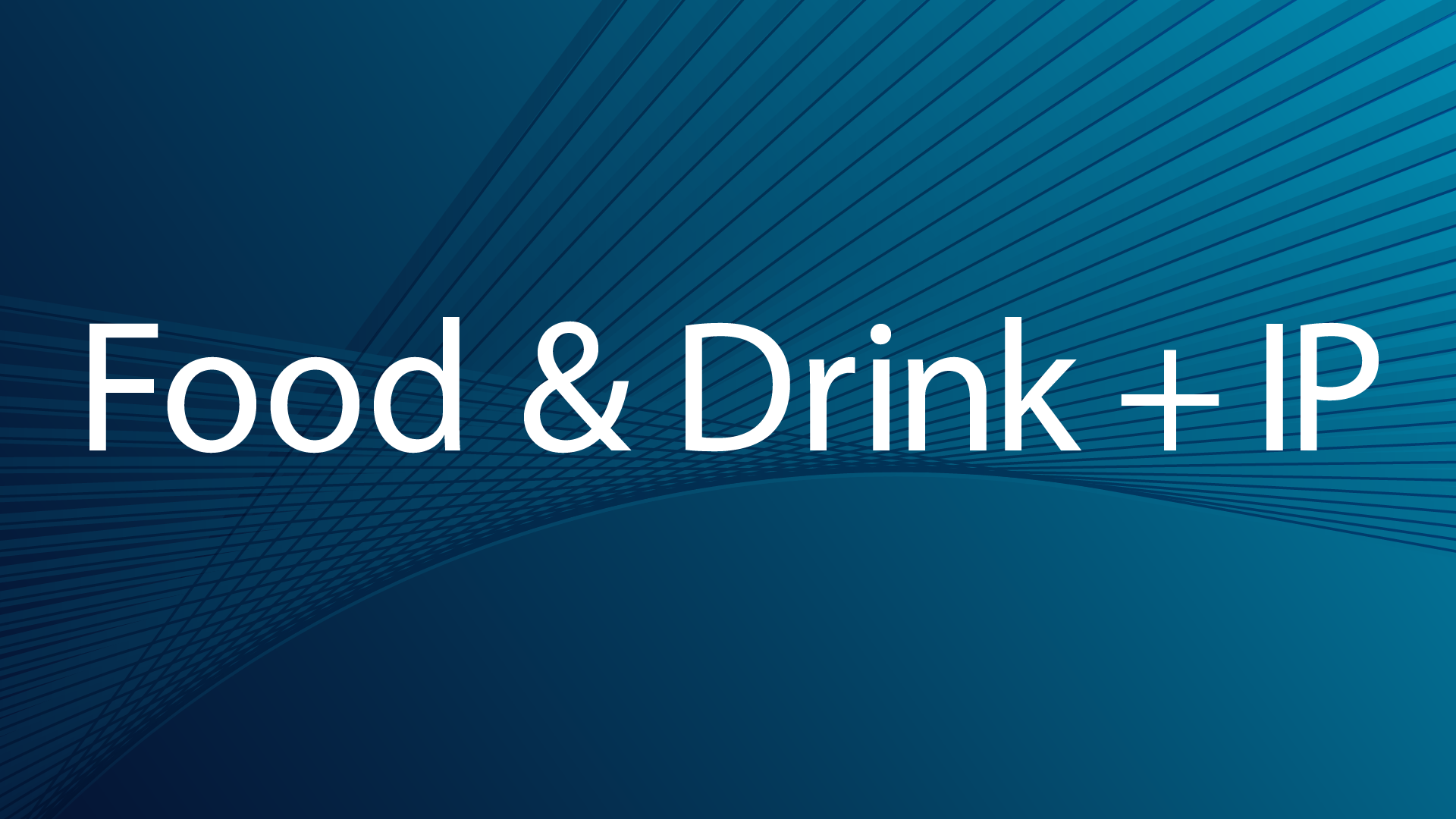Blogs
IP Ingredients: Coffee Corner with Marc Misthal of Offit Kurman – Protecting your brand in the U.S.
August 2024
As one of the biggest global markets, the U.S. is a key territory when it comes to trade mark registration. We spoke to Marc Misthal who is a principal U.S. attorney in the Intellectual Property Practice Group at Offit Kurman, where he advises a global clientele across diverse industries, including fashion, hospitality and restaurants, and luxury goods.
Marc has extensive experience in trademark, trade dress, and copyright litigation, representing clients, including restaurant clients, in federal courts nationwide and before the U.S. Patent and Trademark Office.
Can you give us a general overview of the trade mark system in the U.S. and what you think the key contrasts are with the system in the UK and EU?
The key to the U.S. trademark system is that it is based on use rather than merely filing with the Trademark Office. Generally, a U.S. registration will not be issued without proof of use in commerce (with the exception being registrations based on foreign filings). To maintain a registration, on-going proof of use is required, and the U.S. Trademark Office is very particular about what qualifies as acceptable proof of use.
Since use is the basis for rights in the U.S., a party that has used a mark prior to registering it can hold more substantial rights than a party that registers the mark later. For instance, if Party X started using a mark in 2000 and Party Y filed for a registration of the same mark in 2010, claiming a date of first use of 2009, Party X would have better rights and could seek to cancel Party Y’s registration.
Another important difference in the U.S. trademark system is the substantive examination of trademark applications, a rigorous process overseen by the Trademark Office. The Trademark Office will refuse applications for marks that are confusingly similar to existing marks for related goods or services. This often requires considering the filing strategy carefully to minimize the possibility of such a refusal.
In your experience, are there any particular challenges or pitfalls that you often see someone encountering when trying to protect their trade mark in the U.S.? Are there any that you think are specific to the food and drink sector? How can brand owners avoid those issues?
Maintaining a U.S. trademark registration often hinges on providing evidence of the mark’s use in U.S. commerce, a frequent issue that we encounter.
Another frequent challenge is conflicts with prior users in the U.S. Since U.S. trademark rights are based on actual use rather than registration, it is not necessary to have enforceable trademark rights (it is better to have a registration, but not required), it is important to conduct a search before using a mark in the U.S. Such a search should not be limited to the U.S. Trademark Office’s records, since those records will not have information about parties that have not registered their marks. A properly conducted search offers insights into the marketplace and potential obstacles.
Expanding the use of a brand can also introduce challenges, such as where a restaurant seeks to sell branded food items. Again, conducting a proper search is essential to identifying and addressing any issues before they arise.
How easy is it to enforce rights against infringers? The U.S. has a reputation for being expensive for litigation – how can brand owners mitigate high costs when obtaining/enforcing their rights?
Enforcing trademark rights against infringers can be straightforward, but the approach depends on the circumstances of the situation. Often, sending a notice letter or a takedown request to an online platform is an effective and relatively inexpensive way to address infringement, especially if the trademark owner holds a U.S. trademark registration.
However, in some cases, filing a lawsuit becomes necessary. Infringers may ignore notice letters and only take the matter seriously when faced with legal action. Filing a lawsuit not only forces the infringer to respond but also establishes a reputation for vigorously protecting your rights. This reputation can deter others from infringing in the future, thereby securing the long-term integrity of your trademark.
While U.S. litigation can be costly, many clients opt for alternative dispute resolution methods before escalating to a lawsuit. Even after filing, they are usually open to settlement options, such as early settlement conferences or mediation. In certain cases, seeking immediate injunctive relief can accelerate resolution by putting pressure on the infringer, though such requests must be well-supported by strong legal arguments and evidence justifying the need.
Litigation expenses generally increase during the discovery process, during which both parties are required to produce internal documents like emails and texts, which can be intrusive and time-consuming.
The strength of the mark also plays a significant role in the enforcement of its rights. A unique, arbitrary mark is much easier to enforce than a descriptive one. Consulting with counsel early in the process of choosing a brand name is crucial to ensure the name is strong and protectable.
Are there any particular trends you are seeing with trade mark filings in the U.S. that relate to the food and drink sector?
Branding is becoming increasingly vital in today’s market. Even fruits and vegetables are now being sold under brand names, reflecting this growing importance. With this trend, we are also seeing a rise in trademark disputes reaching the courts. In this landscape, the importance of securing brand protection cannot be overstated. It’s not just a legal formality but a strategic necessity.
For example, many cannabis brands have adopted names or logos resembling well-known food products, leading to legal challenges. The Better Made potato chip/crisp brand sued several cannabis operators, claiming that the “Better Smoke” logo was too similar to its own trademark. Similarly, Tootsie Roll Industries, owner of the DOTS gumdrop brand (www.tootsie.com.candy/dots), issued a notice letter to Lions Labs, prompting them to change the name of an edible product from “Potdots” to “Potpots.” Mars Wrigley also pursued legal action against cannabis companies using variations of its SKITTLES mark (e.g., “Zkittlez”) for their products.
Infringement claims aren’t limited to cannabis products; they have surfaced among beer and alcohol brands, involving both brand names of the items and others relating to the look of the packaging.
Securing protection early on in the process is crucial, especially when products gain unexpected popularity, like the pickle sandwich trend or the introduction of the Cronut. Promptly protecting your brand ensures that the effort and creativity invested in developing your product are safeguarded against potential infringements.
Continuing that focus more specifically on the food and drink sector, have there been any recent changes in practice or case law in the U.S. that brand owners should be aware of, and how can that give us an idea of how that might impact them practically?
Infringement claims go beyond words and logos, including the overall look and design of a product or its packaging. A case in point is the legal action taken by the Japanese company behind Pocky biscuit snack sticks against Pepero for selling a product with a similar appearance. This case underscored safeguarding not just the brand name but also the visual aspects of a product that consumers associate with your brand.
Grubhub is currently facing a significant legal challenge. It is accused of listing numerous restaurants on its platform as part of its service without having formal delivery arrangements with them. In this case, Grubhub placed orders with these restaurants, had their drivers pick up the orders, and delivered them to customers. In contrast, the restaurants lost control over the customer experience. Though a final decision is pending, the case underscores how easily a third party can attempt to take control of your brand and the customer experience associated with it.
Overall, are there any other tips or pieces of advice that you would give someone in the food and drink sector looking to protect their trade marks in the U.S.?
Registering trademarks in the U.S. is a valuable enforcement tool and protects an important company asset. While this can be an expense, in the long run, it can help reduce the costs of litigation and can deter potential infringers. Given the unique aspects of the U.S. market, consulting with experienced U.S. counsel is essential for effectively navigating the trademark registration process.
Comment from HGF: The U.S. trade mark system has some unique requirements and sometimes challenges that need to be considered by anyone intending to enter the market. While it can seem daunting and expensive at times, it is clear that brand owners with an awareness of the benefits and pitfalls of trade mark registration in the US will be in a stronger position to protect their rights.
Offit Kurman is a full-service AmLaw 200 law firm with offices throughout the East Coast and Southern California, serving dynamic businesses, individuals, and families. Founded in 1987, the firm’s 280+ attorneys counsel clients across more than 30 areas of practice. Offit Kurman helps maximize and protect business value and personal wealth by providing innovative and entrepreneurial counsel that focuses on clients’ business objectives, interests, and goals. The firm is distinguished by the quality, breadth, and global reach of its legal services and unique operational structure that encourages a culture of collaboration.
For the latest IP news, updates, and discussion in the food and drink sector, head over to our Food & Drink+IP group: https://lnkd.in/gnYCr72X





























